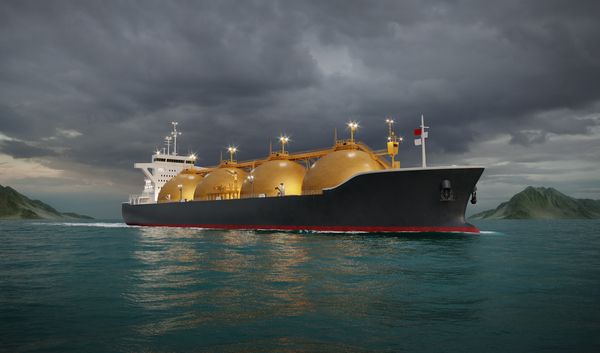Plunging oil prices don't seem to be putting a stop to America's hopes of becoming a world leader in LNG exports. Despite the fact that the industry faces risks from falling oil prices, last week the LNG industry announced two major news items that showed it's not being held back by oil prices. Here's a closer look at the LNG news investors need to know.
Billions raised for Corpus Christi LNG
Cheniere Energy (LNG +0.49%) raised $2.5 billion in convertible notes last week. The money will be used to fund the construction of the company's second LNG export facility in Corpus Christi, Texas. With that capital in hand, the company remains on pace to begin constructing the Corpus Christi liquefaction project early next year.
Overall, Cheniere Energy is investing $30 billion to build nine LNG trains across its two locations to export 5.5 billion cubic feet of natural gas per day, which once liquefied, is equivalent to 40.5 MTPA. However, the company still needs to make a final investment decision on Corpus Christi as well as the final two LNG trains at Sabine Pass, which as the following slide notes are expected to be made next year.

Source: Cheniere Energy Investor Presentation.
Given the fact that funding for Corpus Christi has been raised, it's likely the company will move ahead with the project, especially given the outlook of future LNG demand. According to energy research firm Wood Mackenzie, demand for LNG is expected to increase by 215 MTPA to 2025. That represents a 6% increase per year suggesting that there will be plenty of need for Cheniere Energy's LNG trains in the future as demand in Europe and Asia is expected to be strong as we can see on the following slide.

Source: Cheniere Energy Investor Presentation.
Freeport LNG is approved
The other noteworthy LNG news is the announcement last week that Freeport LNG has received authorization from the Department of Energy to export liquefied natural gas. The approval allows Freeport LNG to export natural gas to countries that do not have a free trade agreement with the U.S. Further, with the approval the facility can export up to 1.8 billion cubic feet of natural gas per day over a 20 year period.
Like Cheniere Energy's Corpus Christi facility, the owners of Freeport LNG will now need to make a final investment decision on the project. Again, given the future outlook for both increased natural gas production in the U.S. as well as increased demand for LNG around the world, it is likely that the owners of the facility will now go ahead and have the facility constructed. As the following map shows, over the next decade the U.S. is expected to significantly ramp up its LNG export capacity as these projects come online -- enabling America to become the leading global supplier of LNG within a decade.

Source: Cheniere Energy Inc Investor Presentation.
Investor takeaway
Given the extremely long lead times of these projects, companies need to really look past the noise in the oil markets and focus on demand decades in the future. The view continues to be that demand for LNG will grow substantially, which will open up the door for U.S. LNG export facilities to profit as America becomes a leading supplier of natural gas to the world.






